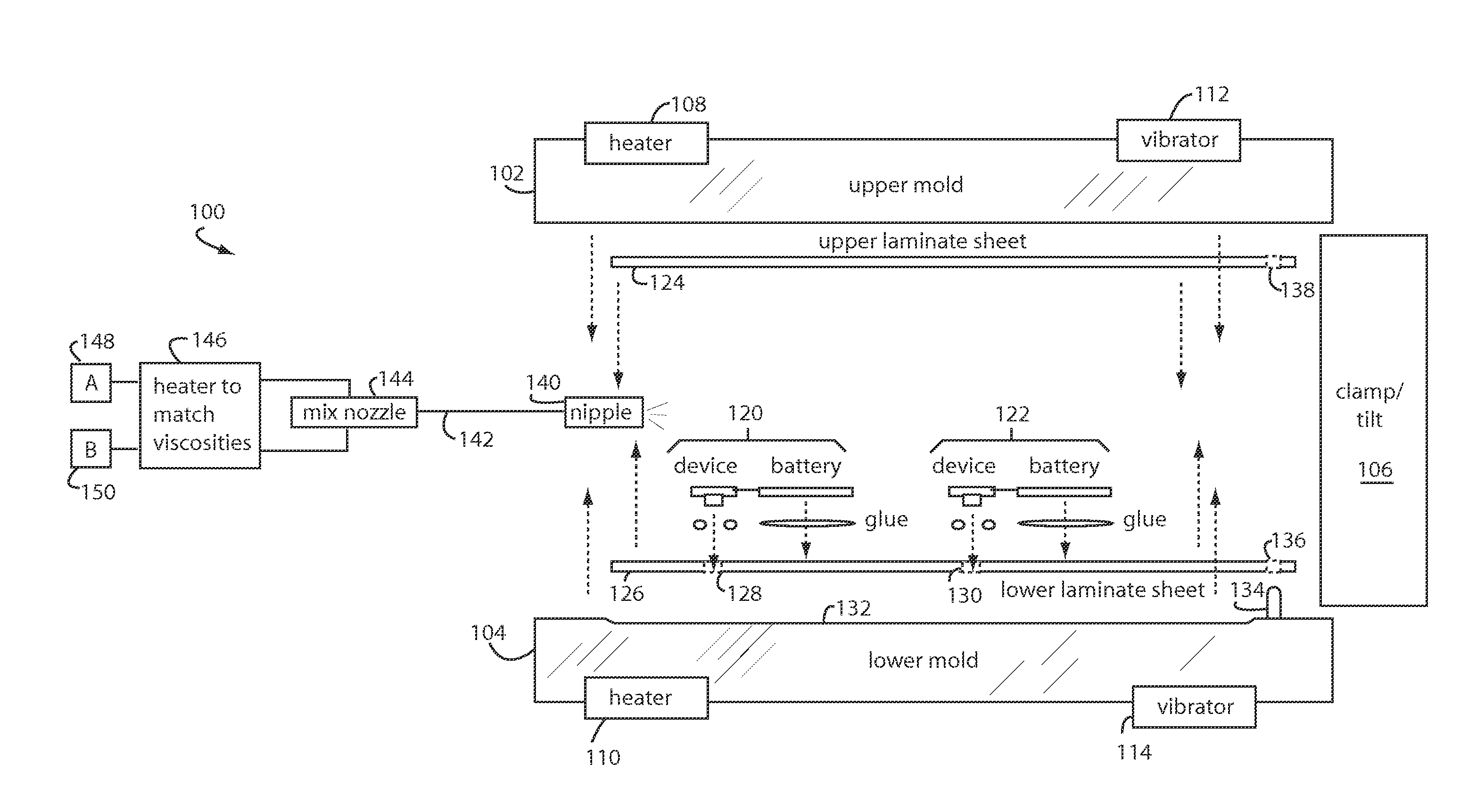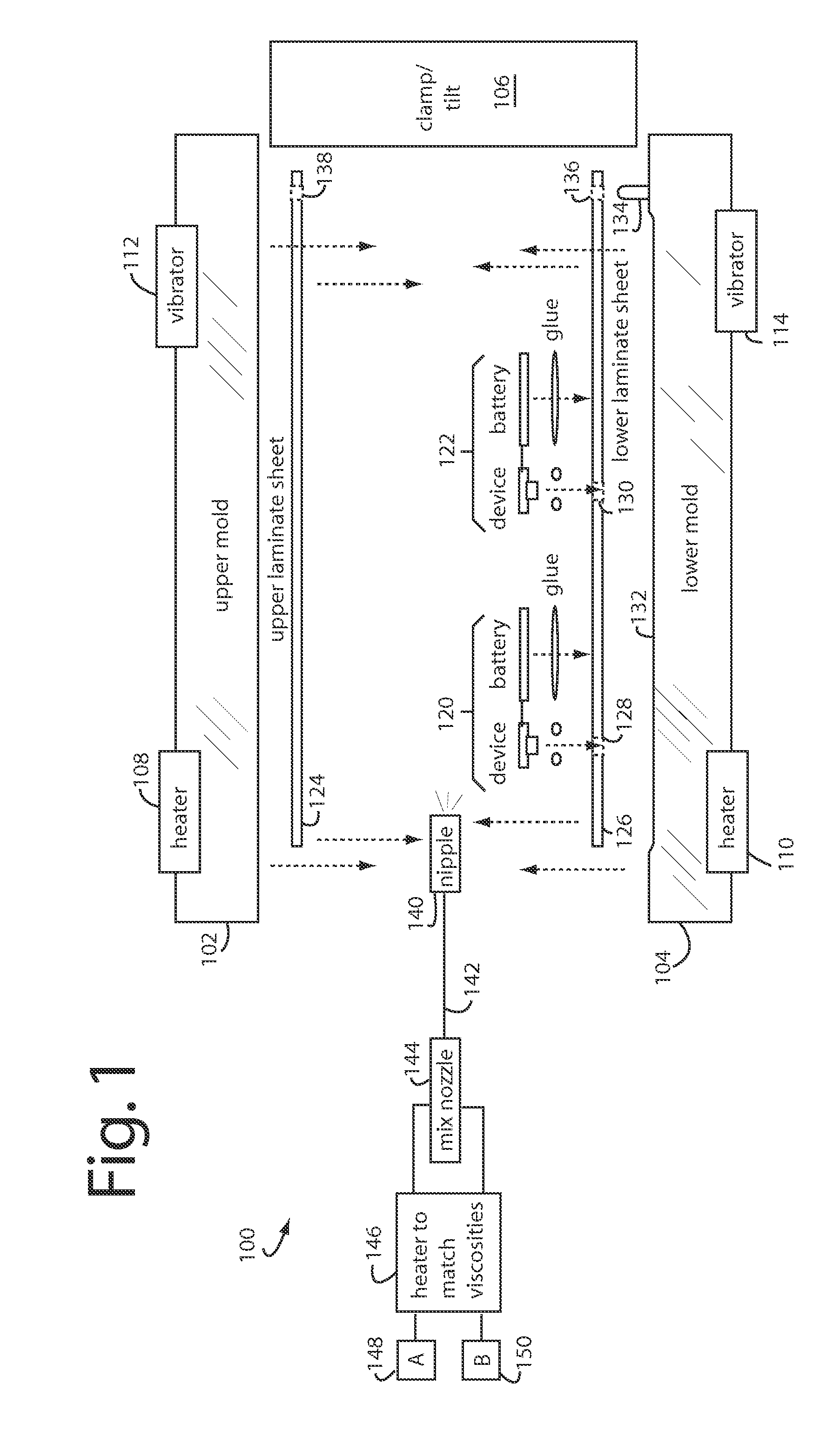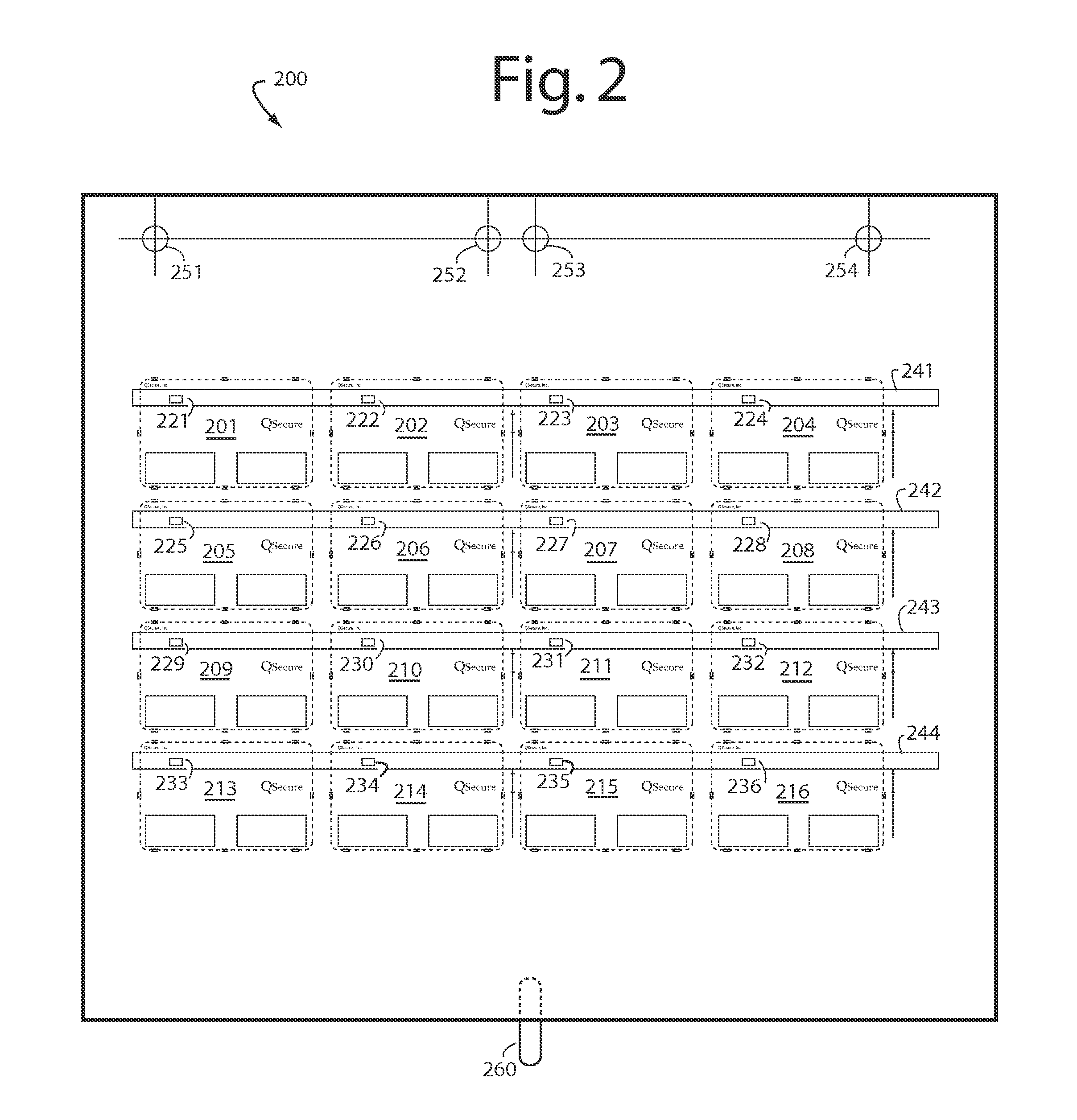Payment card manufacturing technology
- Summary
- Abstract
- Description
- Claims
- Application Information
AI Technical Summary
Benefits of technology
Problems solved by technology
Method used
Image
Examples
Embodiment Construction
[0030]Embodiments of the present invention produce payment cards with dynamic magnetic stripes.
[0031]FIG. 1 illustrates a system embodiment of the present invention for manufacturing payment cards, and is referred to herein by the general reference numeral 100. Such system 100 employs an upper mold 102 that can be opened and hydraulically pressed together with a lower mold 104. Such molds are typically milled from billet aluminum. A mechanism 106 presses the two molds tightly together during plastic injection and can tilt the whole to help evacuate air in the voids displaced by the injected plastic. A pair of heaters 108 and 110 are used to pre-heat the molds so the injected plastic will flow and adhere better. Alternatively, a system of vibrators 112 and 114 can be used during plastic injection to eliminate bubbles.
[0032]In FIG. 1, two subassemblies 120 and 122, for two respective individual payment cards, are shown being sandwiched between an upper laminate sheet 124 and a lower l...
PUM
| Property | Measurement | Unit |
|---|---|---|
| Adhesion strength | aaaaa | aaaaa |
Abstract
Description
Claims
Application Information
 Login to View More
Login to View More - R&D
- Intellectual Property
- Life Sciences
- Materials
- Tech Scout
- Unparalleled Data Quality
- Higher Quality Content
- 60% Fewer Hallucinations
Browse by: Latest US Patents, China's latest patents, Technical Efficacy Thesaurus, Application Domain, Technology Topic, Popular Technical Reports.
© 2025 PatSnap. All rights reserved.Legal|Privacy policy|Modern Slavery Act Transparency Statement|Sitemap|About US| Contact US: help@patsnap.com



